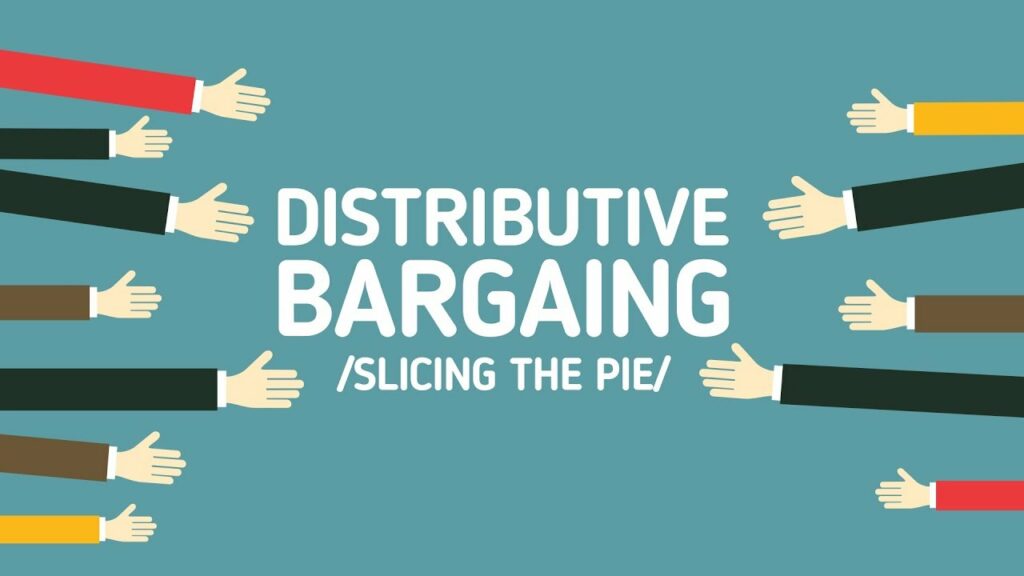Distributive Negotiation – Definition, Tactics, Examples

Distributive Negotiation – Definition, Tactics, Examples
Define distributive negotiation. What are the tactics of distributive negotiation? How to use them successfully? Provide examples.
Define distributive negotiations. = Fixed Pie = when there is a fixed amount of resources and whatever one-party gains, the other party loses. There is a limit or finite amount in the thing being distributed or divided amongst the people involved. Distributive negotiation is appropriate in “divide the pie” situations, when there is a fixed amount of resources and whatever one party gains, the other party loses. One issue involved, one time occurrence.
It usually happens when we don’t know the counterparty and/or we don’t believe they will need to develop a relationship with each other for use in the future.
The ultimate aim, under distributive bargaining approach, is not to come to a win-win kind of situation but that one side wins as much they can. Both parties will try to get the maximum share from the asset or resource which needs to be distributed.
A distributive approach to negotiation is usually what we encounter when we make a purchase.
Parties try to keep information to themselves as it’s the best to let the other party to make the first offer. Let them make the first offer, since this lets you know what they’re willing to give up. Do tell them about alternatives you have, such as competing offers for what you’re selling, or interest in a product that competes with the one they’re selling if you’re the buyer. it’s best to keep information to yourself while trying to get information out of the other party. be willing to make concessions in order to reach a realistic outcome.
Tactics:
- Play your cards close to your chest – Give little or no information to the other side. The less they know about our interests as to why we want to make the purchase, our preferences, or the point at which we’d decline to deal, the better our position. Expressing eagerness or need, reveals a weakness which could be exploited to our disadvantage.
- The opposite is equally true – Try to pry as much information from the other side. Any additional information that we uncover can be used as leverage to negotiate a better deal.
- The only thing you should ever tell – The only information we should ever reveal are those alternative options, such as other sellers, which shows we are prepared to walk from the negotiation whenever it suits us.
- Let them make the first offer – Whatever is used as the first offer will generally act as an anchor upon which the rest of the negotiation will revolve. Try to get the other side to set the stage from which to start.
- Be realistic – Being too greedy or too stingy will likely result in no agreement, so keep it real.
Reference: https://www.pon.harvard.edu/daily/negotiation-skills-daily/what-is-distributive-negotiation/
Examples of Distributive Negotiation:
Buying a car is a classic example of distributive bargaining. A car sale involves two disparate parties: a buyer and a seller. In this case, each person has different interests: while the seller wants to make as much money as possible, the buyer seeks to pay the least amount of money possible. Since there is unlikely to be continued business between these two individuals after the sale, the relationship aspect of the negotiation is not important. Both parties go back and forth in an adversarial manner until a deal is agreed upon. At the end of the negotiation, either the salesperson or the customer may receive the better end of the bargain.
While distributive bargaining can be useful when trying to receive the best deal possible, this method tends to benefit strong or aggressive negotiators the most. It also tends to create competition between the negotiating parties.

